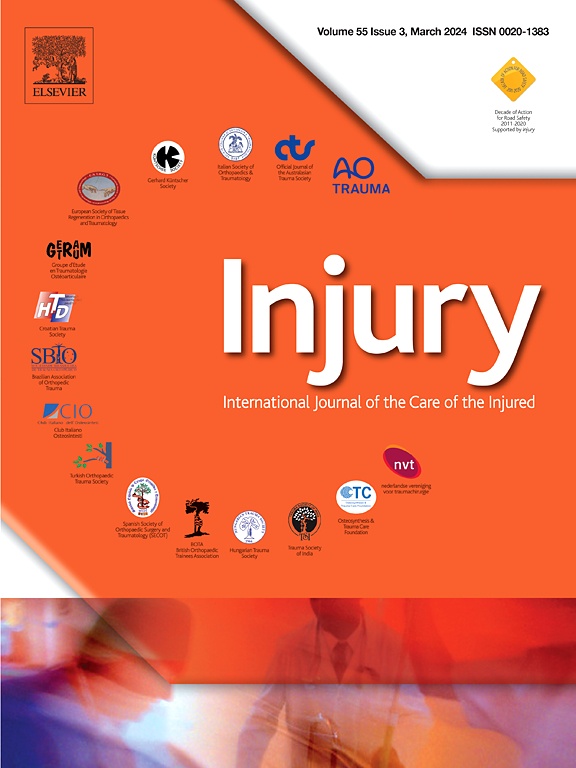
Minimally invasive percutaneous plate osteosynthesis vs. ORIF for distal tibia fractures

Minimally invasive percutaneous plate osteosynthesis vs. ORIF for distal tibia fractures
Comparison of minimally invasive percutaneous plate osteosynthesis with open reduction and internal fixation for treatment of extra-articular distal tibia fractures
Injury. 2013 Aug;44(8):1102-6.Synopsis
94 patients with displaced extra-articular distal tibia fractures were randomized to receive open reduction and internal fixation (ORIF) or treatment using a minimally invasive percutaneous plate osteosynthesis (MIPPO). This one year study aimed to evaluate the clinical success of the minimally invasive operation in comparison to ORIF, assessing differences in complications and operative outcomes. The results demonstrated similar outcomes for ORIF and the MIPPO procedure, unless a Type C fracture was involved, in which case, the healing time was reduced with the MIPPO approach.
Was the allocation sequence adequately generated?
Was allocation adequately concealed?
Blinding Treatment Providers: Was knowledge of the allocated interventions adequately prevented?
Blinding Outcome Assessors: Was knowledge of the allocated interventions adequately prevented?
Blinding Patients: Was knowledge of the allocated interventions adequately prevented?
Was loss to follow-up (missing outcome data) infrequent?
Are reports of the study free of suggestion of selective outcome reporting?
Were outcomes objective, patient-important and assessed in a manner to limit bias (ie. duplicate assessors, Independent assessors)?
Was the sample size sufficiently large to assure a balance of prognosis and sufficiently large number of outcome events?
Was investigator expertise/experience with both treatment and control techniques likely the same (ie.were criteria for surgeon participation/expertise provided)?
Yes = 1
Uncertain = 0.5
Not Relevant = 0
No = 0
The Reporting Criteria Assessment evaluates the transparency with which authors report the methodological and trial characteristics of the trial within the publication. The assessment is divided into five categories which are presented below.
1/4
Randomization
3/4
Outcome Measurements
4/4
Inclusion / Exclusion
4/4
Therapy Description
4/4
Statistics
Detsky AS, Naylor CD, O'Rourke K, McGeer AJ, L'Abbé KA. J Clin Epidemiol. 1992;45:255-65
The Fragility Index is a tool that aids in the interpretation of significant findings, providing a measure of strength for a result. The Fragility Index represents the number of consecutive events that need to be added to a dichotomous outcome to make the finding no longer significant. A small number represents a weaker finding and a large number represents a stronger finding.
Why was this study needed now?
Patients with tibial fractures can be treated operatively with a minimally invasive approach or with open reduction and internal fixation. Minimally invasive percutaneous plate osteosynthesis (MIPPO) can potentially reduce periosteal damage and improve direct bone healing while reducing recovery time. MIPPO is widely accepted and regularly used to treat fractures of the extremities; however, it is not confirmed as to whether the minimally invasive approach is superior to the absolute stability of open surgery. Therefore, this study was required to compare the clinical outcomes of MIPPO and ORIF for displaced extra-articular distal tibia fractures.
What was the principal research question?
Will a minimally invasive percutaneous plate osteosynthesis approach provide greater success in treating a displaced extra-articular distal tibia fracture compared to open reduction and internal fixation?
What were the important findings?
- Complications occurred at a similar rate with 9 occurring in the open group and 10 in the closed group. However, the distribution of these complications was significantly different between groups (p=0.028)
- In the closed group, there was 1 non-union, 4 delayed unions, 5 malunions and 0 infections. In the open group there were 4 non-unions, 3 delayed unions, 0 malunions and 2 infections.
- There was no difference in the operational bleeding between the two approaches (p=0.150).
- Operative time was significantly longer in the open group (65.0 min) than in the closed group (56 min) (p<0.001)
- Subgroup analysis assessing AO fracture types indicated similar recovery times for fracture types A and B; however, type C fractures treated with the minimally invasive approach had a significantly shorter recovery time (p=0.032).
What should I remember most?
Minimally invasive percutaneous plate osteosynthesis (MIPPO) for the treatment of displaced extra-articular distal tibia fractures produced similar results compared to open reduction and internal fixation. A similar rate of complication was shown; however, there was a difference in the distribution of these complications between the two groups. Analysis of fracture healing based on fracture classification indicated that in Type C fractures; MIPPO resulted in a shorter healing times.
How will this affect the care of my patients?
Minimally invasive percutaneous plate osteosynthesis produced similar results when compared to ORIF for patients with extra-articular distal tibia fractures. However, patients with type C fractures may benefit from a shorter healing time when operated on using the minimally invasive percutaneous plate osteosynthesis approach. Further research needs to be undertaken to assess if healing time remains improved in patients with type C fractures when assessed in a larger sample of patients. Additionally, the functional outcomes of minimally invasive techniques and ORIF need to be compared and further assessments of complication rates are required.
Learn about our AI Driven
High Impact Search Feature
Our AI driven High Impact metric calculates the impact an article will have by considering both the publishing journal and the content of the article itself. Built using the latest advances in natural language processing, OE High Impact predicts an article’s future number of citations better than impact factor alone.
Continue



 LOGIN
LOGIN

Join the Conversation
Please Login or Join to leave comments.